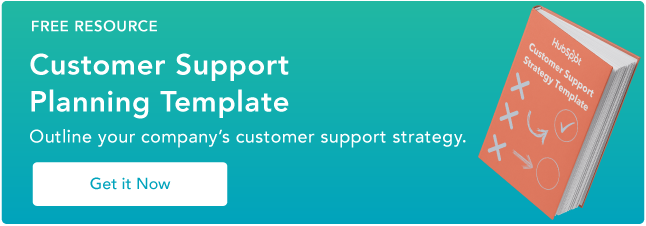Forging great business relationships requires good systems, vigilant investments and good software to keep track of everything. With that in mind, let's explore a few unorthodox ways you can better manage your client relationships.
Table of Contents:
What is client relationship management?
Client relationship management includes all of the steps your organization takes to maintain interactions with prospective, new, and existing clients. A good client relationship management strategy typically includes:
-
A structured system to track and manage your clients (e.g., CRM software)
-
Client relationship goals and milestones (e.g., Increase customer retention)
-
Designated client relationship reps (e.g., Client relations managers)
Let's get into the benefits next.
Benefits of Client Relationship Management
Investing in client relationship management can mean wonders for the success of your business. Here are a few of the benefits.
You'll improve client retention.
When you build strong relationships with your clients they're more likely to stick around. This is important for a number of reasons including the fact that retaining existing customers has the potential to increase profitability by 25%.
It helps you better understand their needs.
Communication is a huge part of client relationship management, and the most effective client relationships give clients the power to voice their needs. You can then use this information to refine and further optimize the client experience.
Happy clients will spread the word.
Clients who have a good relationship with your business are more likely to tell their friends and families about you. And word-of-mouth referrals are critical when it comes to company growth.
Now that we've talked about what client relationship management is and why it's beneficial, let's take a look at some best practices for managing client relationships.
7 Best Practices for Client Relationship Management
The image below highlights seven best practices for client relationship management.

We'll review each in more detail.
1. Involve your client in the goal-setting process.
Your commitment to the client relationship should be made apparent right away during the goal-setting process. Just because a client comes to you seeking a solution, doesn't mean they want to relinquish control over setting goals and developing plans for improving their business.
When both parties are actively engaged in the goal-setting process, you'll achieve far better results that are truly tailored to their needs.
Pro tip: In the field of medicine, collaborative goal-setting encourages patients and clinicians to share ideas and learn from each other, set patient-defined goals, and support goal achievement. Try applying that to your own client relationships.
2. Be proactive with your client communications.
Client relationships are all about proactive communication. And in a business relationship, you have to be the one who takes the initiative.
Clients shouldn't have to send an email and wait for several days before receiving a response. When there is a lack of communication, it's easy for clients to feel like you don't care about their needs. Sounds like a bad dating relationship.
Instead, you should be proactive by reaching out to your clients and keeping them updated on your progress. Essentially, you become so good at keeping your clients "in the loop" that they don't have to ask for updates or information because you've already provided it.
Pro tip: Communication tools like Slack and Trello are great ways to stay in touch and manage projects together. Better yet, they create opportunities for you to reach out and address potential concerns or questions before the client has to ask.
3. Put the onus back on your client, when necessary.
Whether you're creating a marketing campaign or helping a client manage their shipping and inventory needs, you probably won't be successful if the client is completely detached from your processes.
In fact, to achieve success, the client likely needs to do some work themselves or provide additional information before you can continue.
When you ask something of your client, you should be respectful and try to make things as easy as possible. One great example of a tool that does this well is Duda, a website builder which enables agencies to quickly collect content from their clients by providing easy-to-use forms for uploading original files.
Pro tip: For collaboration on documents or the sharing of basic data, you can't go wrong with Google Drive or Dropbox. These intuitive, easy-to-learn systems make it easy to share documents between you and your client.
4. Address a client's needs before they know they even exist.
No matter what role you take in your relationship with the client, you ultimately have the responsibility to address their pain points and find ways to help them reach their goals.
The problem is that clients don't always know what they actually need. They may understand that they are struggling with something, but they may not have identified the reason their business isn't reaching its goals.
By putting yourself in your client's shoes and addressing problems before they come up, you can build trust and deliver better results. If you really want to make a good impression with your clients, you shouldn't just wait for them to come to you with their problems.
Pro tip: When you identify a way that the client could be doing better, take the initiative and present a solution to them. Better still, you could identify things your clients will need in the future, demonstrating your competence and dedication.
5. Pick up the phone and make an actual phone call.
At first glance, email seems like it would always be the easiest way to communicate with clients. After all, the ability to type up a message and review what you've written before hitting "send" can help you avoid mistakes and save some time.
But many clients appreciate the more personal touch of a phone call. And quite frankly, there are many situations when a phone call will prove more effective than a lengthy email thread in the first place.
Pro tip:Contact preferences vary by generation when it comes to customer service. So be sure to take a closer look at your client demographics when determining what the best alternate methods of communication may be.
6. There's no place for pettiness, so don't allow it.
While a client may not be the type of person you'd like to hang out with on the weekends, this doesn't mean you should ignore their calls or talk down to them. These behaviors will only hurt you in the long run and make it harder to find new clients.
Always be sure to treat your clients with respect, or else they may not stick around for the long haul. And try not to get hung up on the small stuff — it's not worth it.
Pro tip: Not every customer is going to be your absolute favorite (and that's OK). But every customer should be treated with the same level of respect. You can always use these tips for dealing with difficult customers if you're ever feeling stuck.
7. Be transparent, even when it's not a good look.
Everyone makes mistakes. Despite your best efforts, you might fail in helping your client reach those collaborative goals you established.
It can be tempting to gloss over these imperfections out of fear that you'll lose a client. But when you choose to be dishonest, the final outcomes can be far worse.
Nobody wants to work with someone who hides the truth in an effort to protect their reputation or maintain higher sales. The notorious Equifax data hack has seen the company's shares and trust plummet because it waited for so long to disclose the information.
Though a timely disclosure likely wouldn't have eliminated all these consequences, a more honest approach could have lessened the damage.
Pro tip: A pest control service provider perhaps said it best: "The majority of the time if you give customers the real situation and are honest with them, they'll be able to see you have their best interest at heart and will be on board."
Putting Your Clients First
An enduring relationship requires significant time and effort. When you invest in your client relationship management strategy and put your clients first, you have a better chance of creating bonds that last a lifetime.
Editor's note: This post was originally published in January 2018 and has been updated for comprehensiveness.
.png?width=112&height=112&name=Image%20Hackathon%20%E2%80%93%20Vertical%20(9).png)






![What Is Customer Goodwill? [Definition + Examples]](https://53.fs1.hubspotusercontent-na1.net/hubfs/53/Customer%20Goodwill.png)
